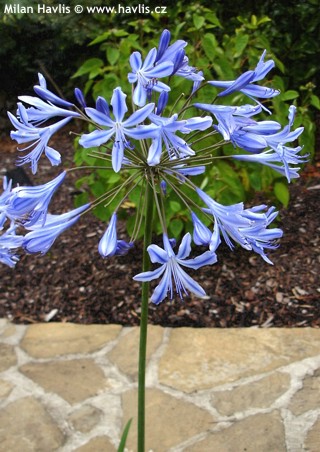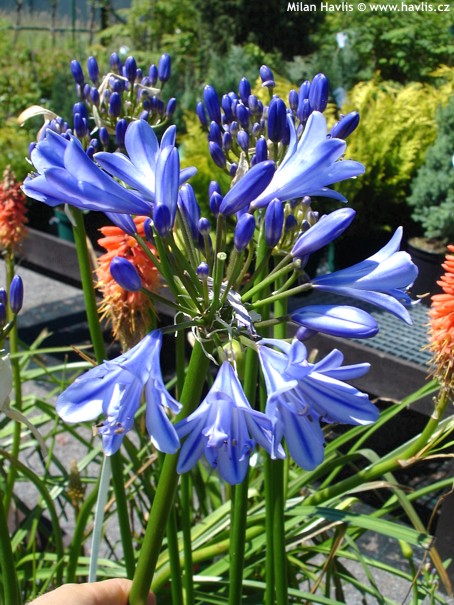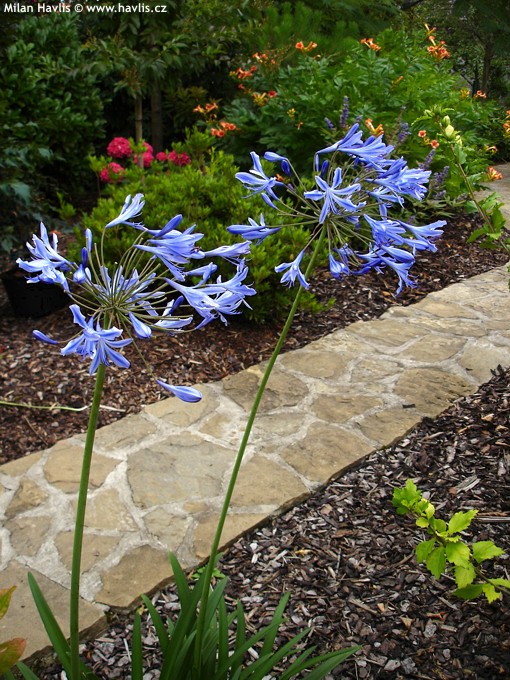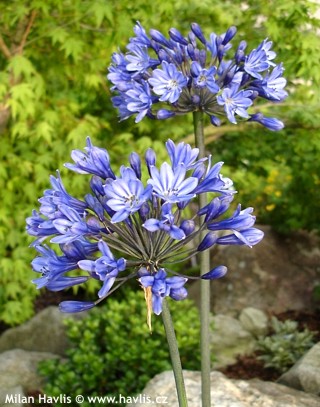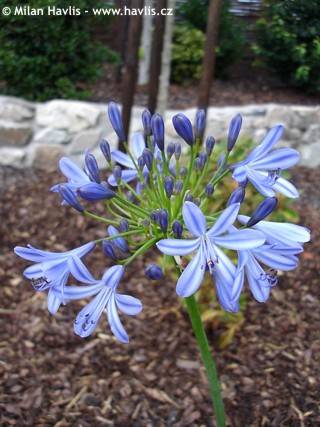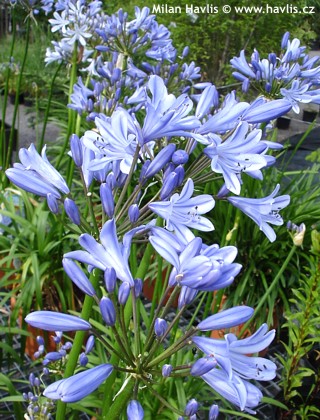Agapanthus 'JACK'S BLUE' African blue lily
size/type
mid-sized perennial,mid-sized perennial
usual height
0,8-1m
usual width
0,4-1,3m
leaves
deciduous broadleaf
colour of leaves
flowers
showy
colour of flowers
blooming time
July-September
location
full sun
USDA zone (lowest)
7 (down to -23°C)
winter protection
for zone 5+6

for zone 7

categorized
Agapanthus
African blue lily is one of the most attractive summer plants. This perennial is from southern Africa where less hardy species are grown. We are very lucky to have good breeders here in Europe. They made several hybrids most of which have not only nicer flowers but are hardier than the species and can grow and flower freely in climate zones where some people still think that magnolias cannot survive.Description of the plant:
Jack’s Blue is a hardy modern hybrid of African blue lily from New Zealand with rich blue flowers. They are trumpet-shaped, sky blue with deep purple-blue stripes, formed in large umbels at the tips of 80-100 cm tall sturdy stems. Strap-like leaves are about 2-3 cm wide, mid green. It belongs to the long-blooming hybrids with flowering time July – September, or even October if the autumn is warm and sunny. Grow agapanthus in fertile, very well-drained soil. In too wet or boggy soil it will most certainly die. The plants benefit from regular watering and fertilizing from spring until end of summer. Though, once established it withstands drought. In the Mediterranean it belongs to the top favourite summer blooming plants. In our gardens it will be a perfect flowering feature along pathways, at swimming pools, and near patios where you spend most of your relaxing time in summer.
Jack’s Blue is a hardy variety and all winter protection it needs is heavy mulching. In too cold areas you can double the mulch pile and cover it with a waterproof shelter to keep it from soaking with water and rotting afterwards. Such protection will ensure surviving low minus twenties centigrade. At the end of winter, after danger of severe frosts remove the waterproof cover and half of mulch and in spring when the temperature gets warm remove all mulch and cut off all leaves so that the plant can begin new growth.
Last update 14-01-2011
QUICK PRICE OVERVIEW
CURRENTLY SOLD OUT
WANT TO TRY A SIMILAR PLANT?












